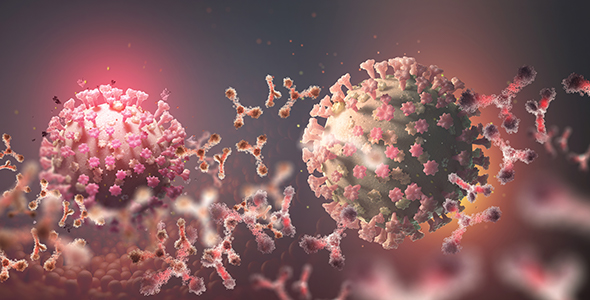By the bioMérieux Connection Editors
To beat the COVID-19 pandemic, a combination of strategies for testing, treatment, vaccination, and community mitigation measures is needed. For those to be effective, we must continue to develop our understanding of the SARS-CoV-2 virus and how the body responds to it. Research on protective immunity is especially important, both because current understanding is limited and because of its implications for testing strategies and vaccination.
The most recent research has led some scientists to suggest that protective immunity lasts only a year or two. This hypothesis is rooted in studies of other human coronaviruses, which may help provide insight into the SARS-CoV-2 virus. However, further analysis of immunity to the virus is needed to determine whether this holds true for SARS-CoV-2. With each new study, our understanding improves incrementally, but it will take time to gain a complete picture of protective immunity for this virus.
Diagnostic Testing & Protective Immunity Duration
In a recent Nature article, researchers said that individuals with more severe infections produced the highest amounts of neutralizing antibodies, while those with mild infections produced small quantities. “This pattern is often seen with viruses: the longer, more severe infections are more likely to produce strong, durable responses,” noted the article. “This is one reason that common-cold coronaviruses sometimes don’t yield long-lasting immunity.”
However, the same article brings up two additional points about protective immunity that will be important for managing the outbreak. The first is that we still do not know what levels of antibodies are needed to confer immunity—it’s possible that small amounts could still be protective. Additionally, a combination of immune system B cells, which are central to immune system memory, and T cells, which recognize and destroy pathogens, likely play a role in the duration of protective immunity.
Whether protective immunity against SARS-CoV-2 is short-lived or long-lived has implications for how the virus will need to be managed. Testing will continue to be extremely important, both for diagnosing patients and for tracking disease spread within local populations. Additional knowledge about protective immunity, including its duration and indicators of presence or absence, could shape the application of diagnostics, especially serological testing.
Impact of Protective Immunity on Vaccine Development & Deployment
Knowledge of protective immunity also has direct implications for vaccine development and deployment. A successful vaccine will safely induce a protective immune response in the recipient, preventing the person from becoming infected with the SARS-CoV-2 virus. A successful vaccination program will deploy those vaccine doses widely enough and with the right cadence to protect populations against the virus.
Low or slow vaccine uptake could result in under-protected populations, leading to infection outbreaks. Cautionary tales from communities where some families have elected not to vaccinate their children against common childhood illnesses demonstrate the need to meet vaccination rate thresholds for herd immunity. Whether protective immunity turns out to be long or short in duration, vaccination strategies will need to include education about the importance of vaccination. However, short-lived protective immunity would necessitate further education that specifically highlights the importance of adhering to vaccination schedules.
While there is plenty of precedent for this type of education with the annual flu vaccine, the fact remains that most people do not get a flu shot. For a SARS-CoV-2 vaccine to make a meaningful contribution to fighting the pandemic in the short term and in the long term, vaccination rates must be substantially better than those for the flu vaccine.
Opinions expressed in this article are not necessarily those of bioMérieux, Inc.



